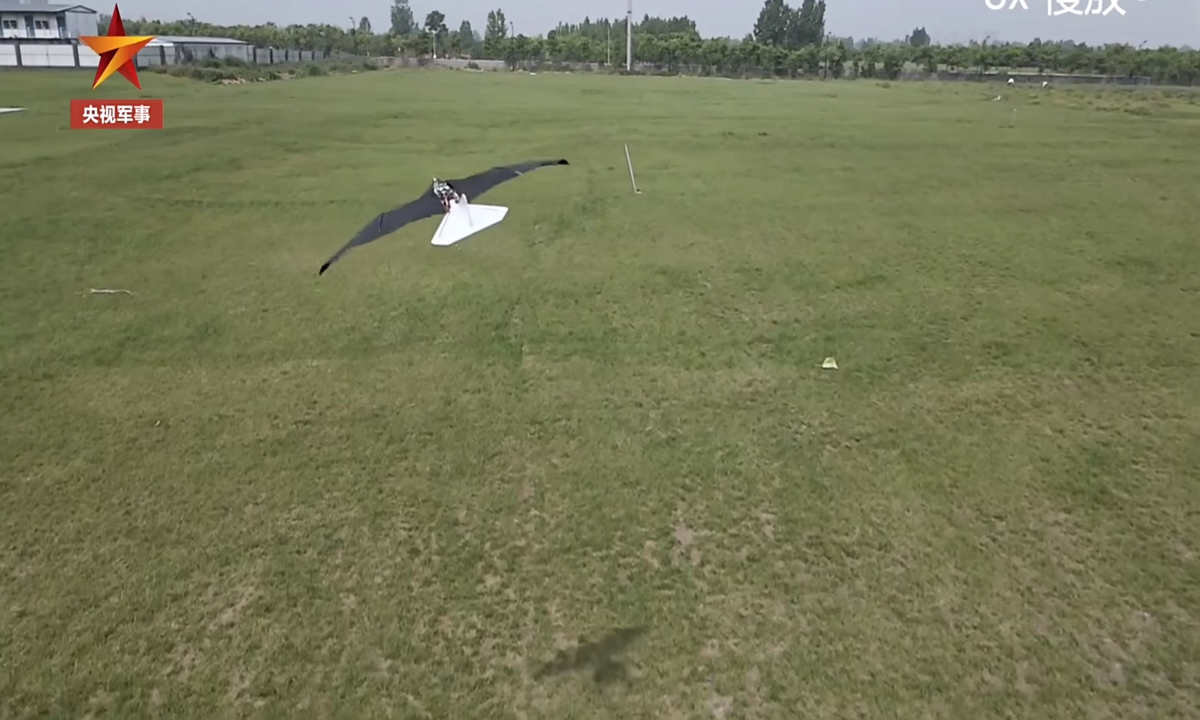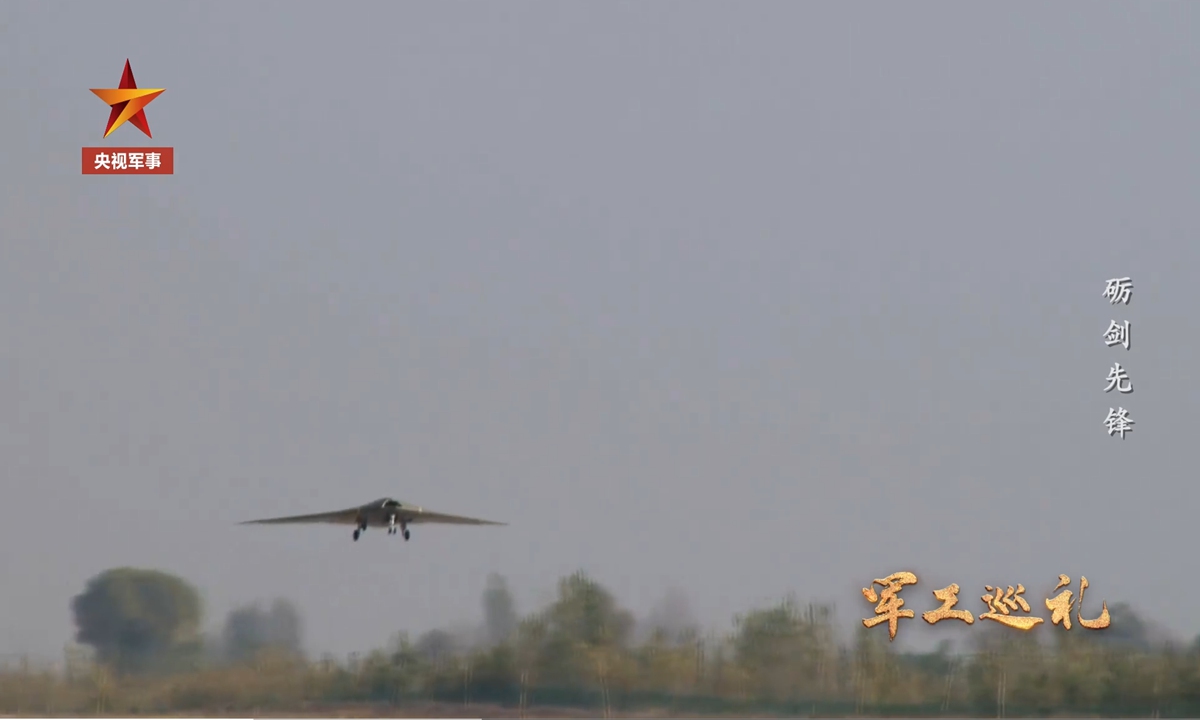
A new type of ornithopter developed by China's Northwestern Polytechnical University makes its debut in early 2024. Photo: Screenshot from China Central Television
China has recently developed a new type of ornithopter, an aircraft that flies by flapping its wings, and experts said on Sunday that the small bird-like aircraft has huge military and civilian application potential.
Developed by a research team on aircraft bionics with the Xi'an-based Northwestern Polytechnical University, the Small Falcon ornithopter, which is the size of a bird, made its debut recently, China Central Television (CCTV) reported on Saturday.
A bird flapping its wings while in flight is accompanied by the wing's stretching and folding, which increases flight efficiency. The Small Falcon ornithopter learned this pattern and can imitate birds through the development of a completely new type of cone crank mechanism, CCTV reported.
With a series of designs, which are optimized by CFD (Computational Fluid Dynamics) simulations and wind tunnel tests, the Small Falcon can fold its wings while flapping them, fold only one wing in flight, adjust the speed of wings flapping, and it can also lock its wings to perform glides, CCTV reported.
These characteristics give the Small Falcon the highest agility and the most bird-like flying movements among its kind, according to the CCTV report.
The Small Falcon has application potential in fields like military reconnaissance, ecological monitoring and environment protection, CCTV said.
Video footages featured in the report show the ornithopter's test flights, with netizens commenting that it is very difficult to tell the difference between the aircraft and a real bird.
It is indeed difficult to distinguish between a highly biomimetic ornithopter and a real bird with the naked eye, especially when it is higher up in the sky, a Chinese aviation expert who requested anonymity told the Global Times on Sunday.
Modern fixed-wing aircraft and rotorcraft seek stealth mainly focusing on electromagnetic waves, noises and visibility, but ornithopters achieve stealth in terms of recognition, the expert said, "Even if you see the aircraft, you will tend to ignore it because you might think it is a bird."
Such aircraft are suitable for reconnaissance, surveillance and even precision strike missions in special operations. In ecological monitoring and environment protection applications, they are unlikely to frighten wild animals, the expert said.




